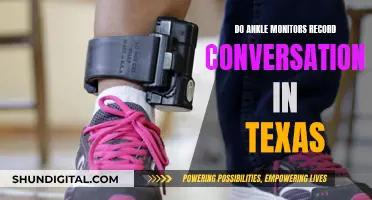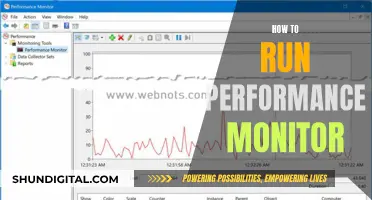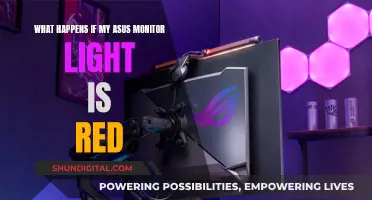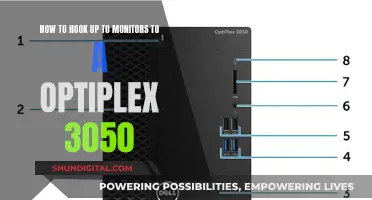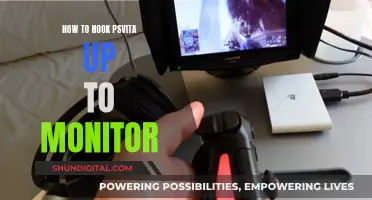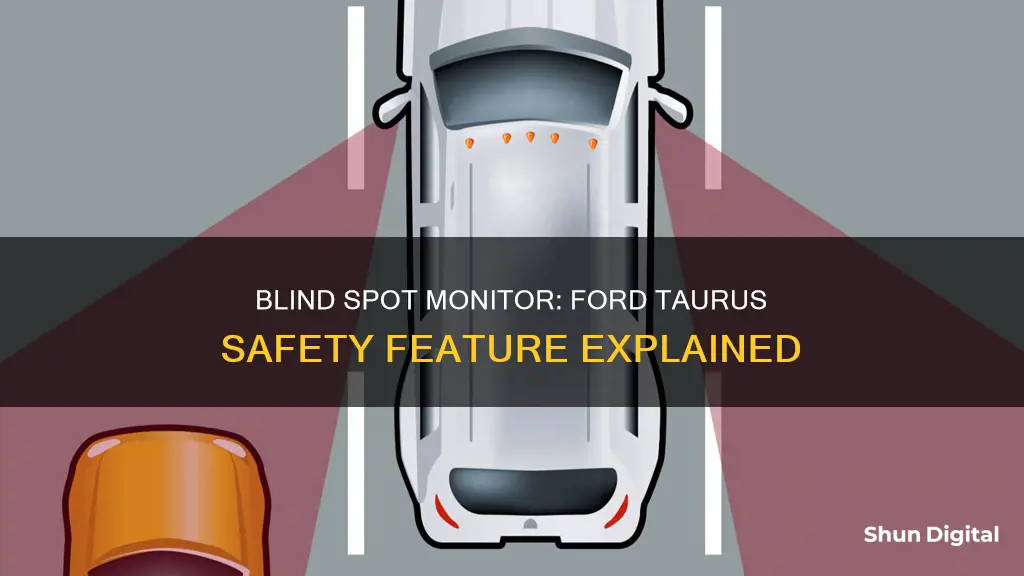
The Ford Taurus is equipped with a Blind Spot Information System (BLIS) that helps drivers detect vehicles that may have entered their blind spot zone. This system is designed to aid the driver in changing lanes or backing out of a parking space with more confidence. It uses radar sensors on both sides near the rear of the vehicle to detect objects in the blind spot and alerts the driver with an indicator light in the side-view mirror. It is important to note that BLIS should not be used as a replacement for careful driving and checking mirrors and blind spots before changing lanes or reversing. While the system provides valuable assistance, it has certain limitations and may not detect all objects or function properly in all conditions.
| Characteristics | Values |
|---|---|
| Purpose | To help avoid injuries by alerting the driver of vehicles in their blind spot |
| Activation | Turns on when the engine is started and the vehicle is driven forward above 3 mph (5 km/h) |
| Deactivation | Turns off when the vehicle is in park (P) or reverse (R) |
| Alert Type | Visual (yellow indicator light in side mirror) and audible |
| Alert Conditions | When a vehicle enters the blind spot zone; does not alert when a vehicle quickly passes through the blind zone |
| Detection Area | Both sides of the vehicle, extending rearward from the exterior mirrors to approximately 10 feet (3 meters) beyond the bumper |
| Limitations | Does not detect parked vehicles, people, animals, or infrastructure (e.g. fences, guardrails, trees); does not function in severe weather conditions such as snow, ice, or heavy rain |
What You'll Learn

The blind spot monitor's function and limitations
The Ford Taurus Blind Spot Information System (BLIS) with Cross-Traffic Alert is designed to aid the driver in detecting vehicles that may have entered the blind spot zone. The detection area is on both sides of the vehicle, extending rearward from the exterior mirrors to approximately 10 feet (3 meters) beyond the bumper. The system alerts you if certain vehicles enter the blind spot zone while driving. It is important to note that BLIS is not a replacement for careful driving and only serves as an aid. It should not be used as a substitute for using the interior and exterior mirrors and looking over your shoulder before changing lanes.
The system uses radar sensors located behind the bumper fascia on each side of the vehicle. These sensors detect vehicles in the blind spot zone and alert the driver through an indicator light in the side-view mirror. When a vehicle is detected, the indicator light flashes if the turn signal is on for that side of the vehicle. The system also provides an audible warning and a visual display in the message center, indicating the direction from which the vehicle is approaching.
BLIS has some limitations and may not function properly under certain conditions. For example, it does not operate in reverse or park and does not provide additional warnings when a turn signal is on. Additionally, the system does not detect vehicles passing through the blind zone very quickly, typically in less than two seconds. It is also important to note that BLIS is not designed to prevent contact with other vehicles or objects, nor is it meant to detect parked vehicles, people, animals, or infrastructure such as fences, guardrails, or trees.
The performance of the system may be affected by factors such as severe weather conditions, debris buildup on the sensor area, or the use of bike and cargo racks. In such cases, it is recommended to switch off the system manually to avoid false alerts.
Overall, while the BLIS in the Ford Taurus can be a valuable aid for drivers, it is essential to understand its limitations and continue practicing safe driving habits, including regularly checking mirrors and blind spots.
Monitoring Memory Usage: Tips for Mac Sierra Users
You may want to see also

How to set up the system
The Blind Spot Information System (BLIS) is designed to detect vehicles that have entered the blind spot zone on either side of your Ford Taurus. The system uses sensors located behind the rear bumper on both sides of the vehicle to detect objects up to 18 metres beyond the rear bumper.
To set up the system, follow these steps:
- Start your vehicle and shift into drive (D).
- Ensure your vehicle speed is greater than 10 km/h. The system will automatically turn on and is now active.
- You can switch the system on or off by adjusting the setting in the information display. See your vehicle's General Information for details on how to do this.
- If you are towing a trailer, you will need to set up a trailer through the information display. The system will prompt you for trailer information, including length and width.
- Enter the length of the trailer in metres. The maximum supported length is 10 metres.
- Confirm the width of the trailer. The maximum supported width is 2.5 metres.
- The system will now be set up for your trailer.
Note: Keep the sensors free from snow, ice, and large accumulations of dirt. Do not cover the sensors with stickers, repair compound, or other objects. Blocked sensors will affect system performance.
Monitoring Electrical Usage: Circuit Surveillance Simplified
You may want to see also

How to switch the system on and off
The Blind Spot Information System (BLIS) turns on when the engine is started and the vehicle is driven forward above 3 mph (5 km/h). It remains on while the transmission is in D (Drive) and N (Neutral). If shifted out of D (Drive) or N (Neutral), the system enters CTA mode. Once shifted back into D (Drive), BLIS turns back on when the vehicle is driven above 3 mph (5 km/h).
To switch the system off, you can temporarily disable it using the information display control. Refer to the Information Display chapter in your manual for more details. When you switch the system off, a warning lamp will illuminate and the alert indicators will flash twice. The system will switch back on whenever the ignition is switched on.
You can also switch the system off permanently at your authorised dealer. Once switched off, it must be switched back on at the dealership.
Fixing the ViewSonic VA 1930WM LCD Monitor: A Step-by-Step Guide
You may want to see also

The system's alerts and indicators
The Systems Alerts and Indicators
The Blind Spot Information System (BLIS) uses radar sensors to monitor the vehicle's blind spots on either side. When a vehicle enters the blind spot, the system alerts the driver through a series of indicators and alerts. The indicators are designed to be clear and easily understood, providing the driver with valuable information to make safer lane changes.
One of the key indicators is the Blind Spot Monitor (BSM) icon, which illuminates in the side mirror when the system is active and functioning properly. This icon acts as a constant reminder that the BLIS is operational and ready to provide assistance. When a vehicle enters the Taurus' blind spot, the BSM icon begins to flash, drawing the driver's attention to the potential hazard. Additionally, a warning indicator arrow, located within the instrument cluster, illuminates, indicating the side from which a vehicle is approaching.
In certain models, an audible alert may also sound when a vehicle is detected in the blind spot. This alert, in conjunction with the visual indicators, ensures that the driver is made aware of the potential hazard. The volume and frequency of the alert can often be adjusted to suit the driver's preferences and ensure it is noticeable without being distracting.
The system is designed to activate automatically when the Ford Taurus is in motion, typically above a certain speed (around 6 mph). This ensures that the driver receives timely alerts when the vehicle is in motion and the blind spot is a potential hazard. The system deactivates when the vehicle's speed drops below a certain threshold, or when the driver engages the turn signal to intentionally change lanes.
It is important to note that the BLIS is an assistive technology and does not replace the need for safe driving practices and proper mirror adjustment. Drivers should still perform visual checks and follow standard safety protocols when changing lanes or maneuvering their vehicle. By providing an extra layer of awareness, the BLIS enhances the driver's overall situational awareness and helps reduce the risk of collisions.
Hooking CRTs to Monitors: The Ultimate Guide for Melee
You may want to see also

The system's sensors
The Blind Spot Information System (BLIS) uses radar sensors on both sides near the rear of the vehicle. When a vehicle is detected in your blind spot, you are alerted with an indicator light in the side-view mirror.
The radar sensors are located behind the bumper fascia on each side of the vehicle. They should not be blocked by mud, snow, bumper stickers, or other objects. If the sensors are blocked, the system will not function optimally.
The system turns on when the engine is started and the vehicle is driven forward above 3 mph (5 km/h). It remains on while the transmission is in Drive (D) or Neutral (N). If shifted out of Drive or Neutral, the system enters Cross-Traffic Alert (CTA) mode.
CTA warns the driver of vehicles approaching from the sides when the transmission is in Reverse (R). It detects approaching vehicles from up to 45 feet (14 meters) away, although coverage decreases when the sensors are blocked. Driving in reverse slowly helps increase the coverage area and effectiveness of the CTA system.
The BLIS and CTA systems illuminate a yellow alert indicator in the outside mirror on the side of the vehicle the approaching vehicle is coming from. The alert indicator dims when nighttime darkness is detected.
If the system detects a fault, a warning lamp illuminates and a message is displayed. The system can be reset in two ways: 1) when at least two objects are detected while driving, or 2) turn the ignition key from on to off, then back on.
Best Monitor Size for Your Arcade Cabinet
You may want to see also
Frequently asked questions
The Blind Spot Information System (BLIS) is a driver-aid feature that uses radar sensors on both sides near the rear of the vehicle to detect vehicles in your blind spot. When a vehicle is detected, an indicator light in the side-view mirror alerts you to its presence.
The BLIS uses radar sensors on both sides of the vehicle near the rear bumper to detect vehicles in the blind spot zone. When a vehicle is detected, an indicator light illuminates in the side-view mirror on the side the vehicle is approaching from.
The BLIS turns on when the engine is started and the vehicle is driven forward above 3 mph (5 km/h). It remains on while the transmission is in Drive (D) and Neutral (N).
The BLIS is not designed to prevent contact with other vehicles or objects, nor is it meant to replace careful driving and looking over your shoulder before changing lanes. It also does not detect parked vehicles, people, animals, or infrastructure such as fences and guardrails.


